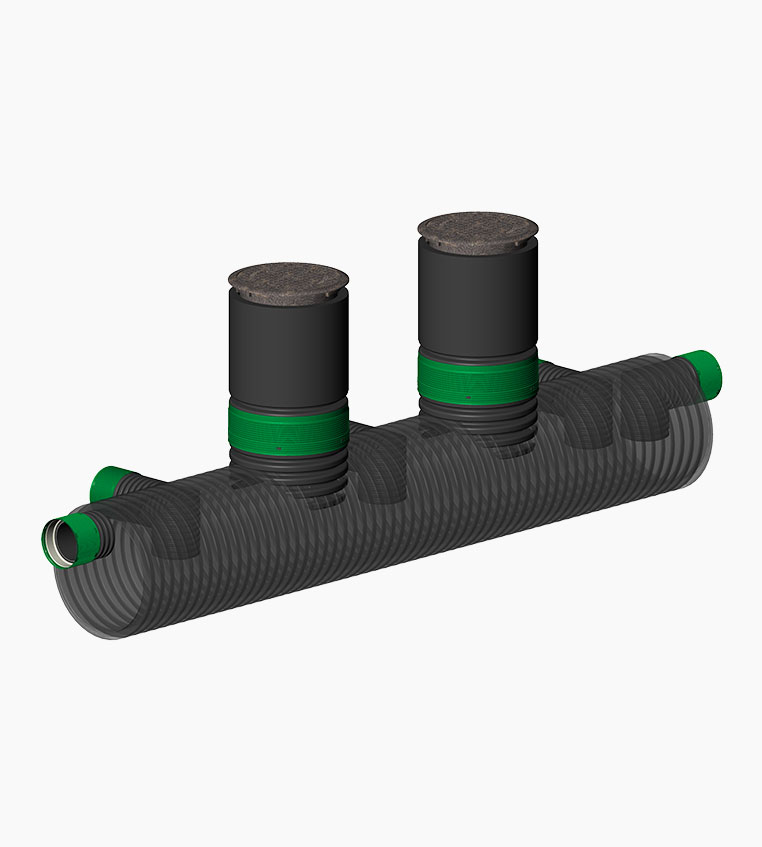Pretreatment Unit
Storm water pretreatment system for settling
The configuration of the different pretreatment models allows a minimum accumulation of 25 % of its volume in sediment.
The pretreatment unit, installed upstream of a retention basin, captures sediments, oils and floating debris to prevent their migration to the retention system, thus averting any risk of clogging the clean stone. As a result of Stokes’ law*, fine particles remain trapped in the pretreatment unit. It is used to control the quality of runoff water in urban areas. The pretreatment unit retains particles of 100 microns or more, from very fine to very coarse sand, and effectively removes total suspended solids (TSS).
Model shown: 900 mm (36 in) model, with 4 outlets of 300 mm (12 in)
* Stokes law defines the behaviour of settling solid particles in a fluid.















